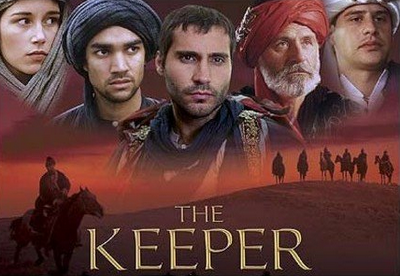 |
| Omar Khayyam |
Amin Maalouf, a Paris-based Lebanese writer who won the Prix Goncourt in 1993, sets the record straight in his marvellous blend of fact and fiction, Samarkand. The novel not only imagines the history of the manuscript of the Rubaiyat, it recreates the city of Samarkand in the 11th century AD, a renowned centre of beauty and learning.
Only the bare facts of his life are known. He was born in Nishapur, Persia, in 1048 AD, possibly to a family of tent makers: the Farsi word 'khayyami' means 'tent maker'. (Khayyam himself played with this notion in later life in a poem that started 'Khayyam, who stitched the tents of science...)
After studying philosophy at Nishapur, a hub of culture and civilization, Khayyam travelled to Bukhara, where he frequented the renowned library of the Ark, as had Avicenna earlier. In 1070 he moved to Samarkand where he was supported by Abu Tahir, a prominent Samarkand jurist; this support allowed him to write his most famous algebraic work, the Treatise on Demonstration of Problems of Algebra.
This treatise contained a complete classification of cubic equations with geometric solutions found by means of intersecting conic sections. Khayyam also provided an interesting historical account in which he claims that the Greeks had written nothing on the theory of cubic equations.
 |
| Detail from Khayyam's algebraic treatise |
Khayyam left Samarkand in 1073 at the invitation of Malik Shah, ruler of Isfahan, to set up an observatory there. For 18 years he and other leading scientists and astronomers produced work of outstanding quality.
He led significant studies on compiling astronomical tables and he also contributed to calendar reform: in 1079 Khayyam measured with astounding accuracy the length of the year as 365.24219858156 days. Today we know that a year's length is 365.242190 days. The calendar, known as the Jalali calendar, was used throughout the Perisan empire until the 20th century and, following a modification in 1925, is the basis of the modern Iranian calendar.
Omar Khayyam died in 1131, aged 83, and his mausoleum in his hometown of Nishapur is visited by hundreds of thousands of people every year. The mausoleum's interior and exterior walls are decorated with his quatrains inscribed as inlaid tile works.
His life and work has inspired many movies, most recently the 2005 film The Keeper: The Legend of Omar Khayyam, written and directed by US-based Iranian director Kayvan Mashayekh. Try to find a copy at your library or DVD store, as it was filmed mostly in Khiva and Bukhara.
And please try to pick up a copy of Maalouf's Samarkand, published in Abacus paperbacks. It's an evocative and beautifully written story.
 |
| Poster from Kayvan Mashayekh's film 'The Keeper' |
The world is a caravanserai, with one entry and one exit…
Related posts:
Avicenna of Bukhara and Al-Khorezmi of Khiva
Uzbek Caravanserais
Merv, an Ancient Silk Road Oasis in Turkmenistan
Travelling the Great Silk Road to Canberra, Australia